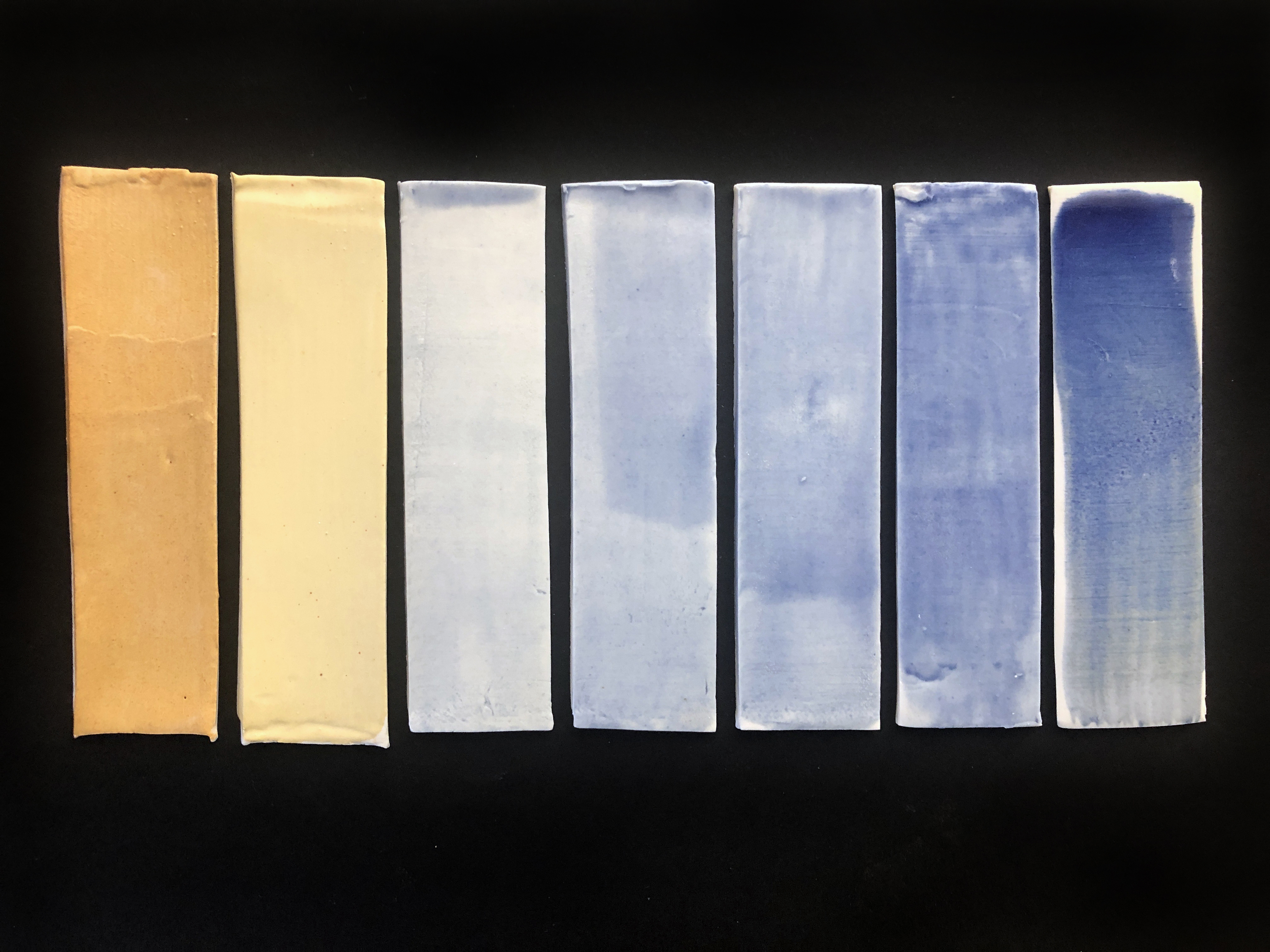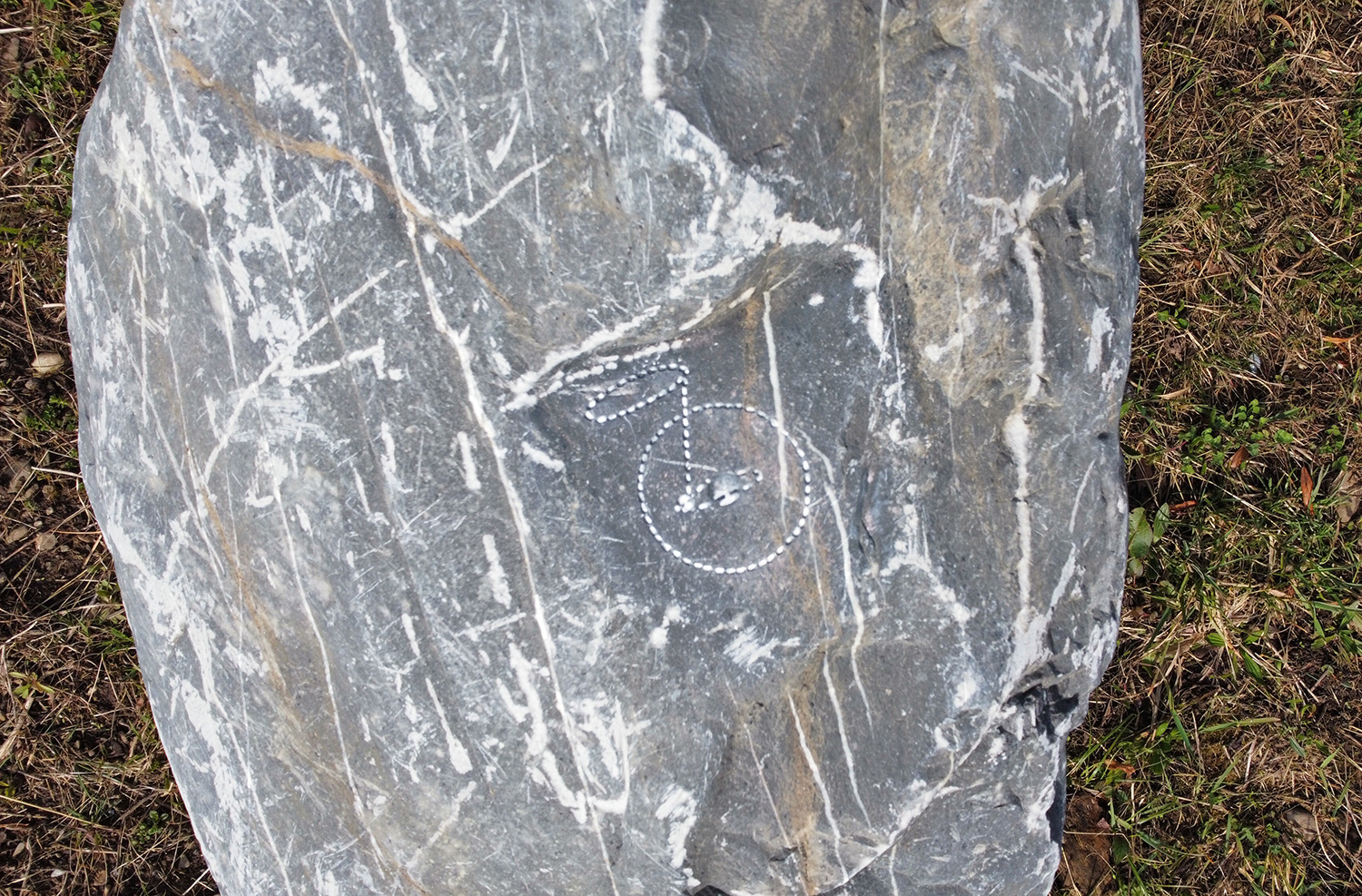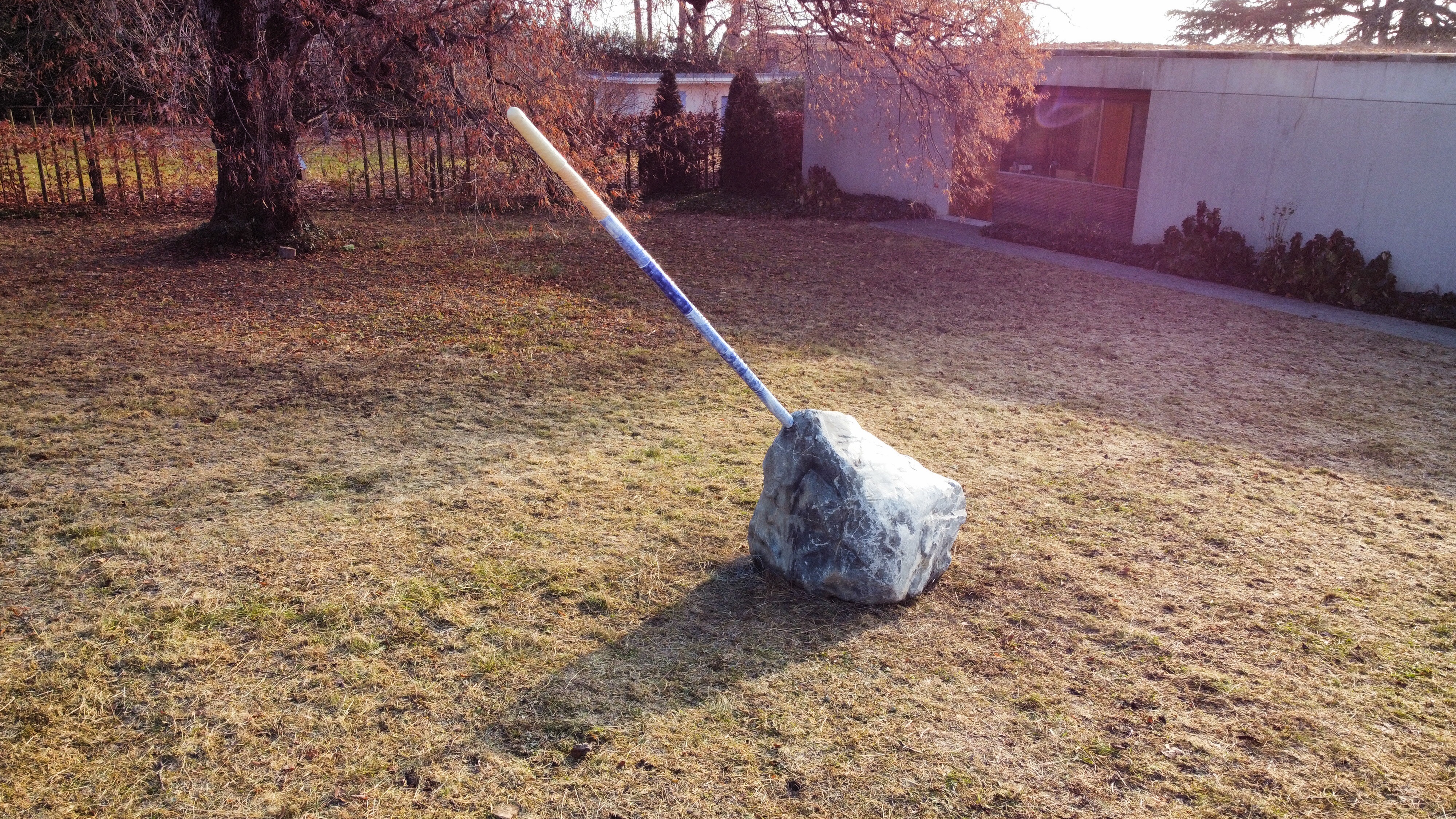|
North Stars is a celestial time-keeping device located at La Becque Artist Residency, La Tour-de-Peilz, CH. Mimicking the simple construction of a sundial, North Stars tracks precession of the North Celestial Pole, caused by a slight wobble in the Earth’s rotation due to the gravitational forces of the Moon and the Sun. One complete cycle tracked by this device lasts 25,771.5 years. Tracked might not be the right word here, this device, rather, makes a cycle apparent while providing reference points to locate oneself within the larger process. It is a passive marker.
This work emerged through my research into the star Vega. Vega is the brightest star in the constellation Lyra and has been used by astronomers as the baseline for measuring the brightness of other stars on a scale called apparent magnitude. My interest in the constellation Lyra came from its coincidental proximity to a cluster of potentially habitable exoplanets recorded by the Kepler Space Telescope. Vega will also become the pole star in 12,000 years. As the Earth’s axis rotates slowly, the star that acts as a navigational beacon changes: Polaris, Errai, Alderamin, Fawaris, Vega, Tau Herculis, Thuben, before arcing back to Polaris. There are gaps where there is none, nothing to point the way, nothing stable in the sky. Polaris has only been this star for the last 500 years and is one of the most accurate pole stars, requiring only minute adjustment to obtain accurate measurements with an astrolabe, a relatively simple navigational device. A correlation that may have accelerated the navigation advances that facilitated colonization and globalization as we know it today. Precession also affects the climatic conditions on Earth known generally as the Milankovitch cycles. Glacial and interglacial periods in the Earth’s geological history have reliably followed these cycles, until now.
North Stars consists of seven porcelain cylinders, each glazed in the apparent color of their corresponding star. Polaris is a faint yellowish white, Errai a sunny orangish-yellow, Alderamin a whitish blue, Fawaris, a slightly bluer white, Vega, a bluish white, Tau Heraculis a sky blue on a bright day, and Thuban a clear sky over the desert. The shades of each cylinder form a spectrum of guidance and a mark for when in this roughly 26,000 year cycle this object was created, in the epoch of Polaris.
A series of color tests were made and glazes developed while in residence at La Becque, the selected glazes for use on the cylinders are shown below.

The sculpture is tilted at an angle of 46.2 degrees, accounting for La Becque’s position on the globe so that it points directly at the fixed point in the sky that becomes a brief home to this procession of pole stars.
A cypher (below) is engraved into the rock at the base of the sculpture to communicate its purpose beyond us, beyond our language.


Interviews concerning North Stars and its themes:
|
Interview with Joel Kuennen and Nora Khan on New Models about North Stars, La Becque, Deep Time, NFTs, and how time can change how we engage with the Earth in the everyday.
|
|
|
Teti Group Studio Interview: watch a video interview of artist Joel Kuennen made at La Becque résidence d'artiste in December 2021. Joel responds to questions from Gabriel Gee about his then work in progress North Stars, as well as his explorations of deep time, ceramics, historical landslides on the Lac Léman, and breathtaking culinary explorations. You can watch a teaser here (2mn), or the full interview there (12mn).
|
|